- Home
- Simon Winchester
The River at the Centre of the World Page 31
The River at the Centre of the World Read online
Page 31
It doesn't help that many of the boats also fall far short of the standards that are expected by the kind of travellers who can afford to make such a journey. But there is worse: the sights – if the boat trip is well enough organized to allow one to see them (I once went on a trip where one entire Gorge transit was performed in the dark) – are often so ineptly explained, the towns in which tourists stop are so vile and so jammed with tawdry goods and populated by the unashamedly crooked, the coal-smelling pollution is everywhere so appalling, the factories and the workers' houses are so ugly and such a blot on a once pleasant landscape, that it is not surprising that so many who disembark in Wuhan three days later are eager to put the trip behind them. They all seem to categorize the Three Gorges trip as an experience, something all are glad to have done, but unlikely to ever want to do again.
‘The Taj Mahal – definitely yes,’ said one elderly American from Cleveland with whom I once travelled on a Gorges trip. ‘The Grand Canyon – yes. Paris – yes. China – most certainly yes.
‘But the Three Gorges – quite frankly, I hate to say it, but it's pretty much a waste of time. Better to read about it. And yet, my God – did those writers have imaginations! They described things that simply aren't here.’
His wife chipped in, agreeing with what her husband had said, but wanting to record her own grace note of disappointment. ‘Where,’ she wanted to know, ‘are the naked trackers? Why aren't boats being hauled over the rapids by naked Chinese men?’ She showed me a brochure: there were pictures of nude men with well-muscled buttocks and backs, lashed together with braided ropes, bending in their scores to haul a ship up and over a raging whirlpool. Some were in the water, their skin glistening like silver. Others, with the bamboo-fibre ropes bent over their backs, hauled from on land, their feet clamped onto the rocks, their arms loose and their fingertips touching the earth, their heads low, their eyes staring fixedly at the ground. On board the ship, a trackers' master beat a drum, and one could almost hear the singing and the grunts as, foot by painful foot, the army of men drew the huge wooden vessel onward against the rushing might of the stream.
I was sorry to disappoint her and to snatch away what had clearly been, back in her Ohio bedroom, a delicious erotic expectation. I explained to her that like the whiffletree, the Yangtze trackers were now all gone, victims of reciprocating engines, the power of steam, and the liberal use of dynamite in blowing up the rapids that remained.
The only trackers who could be seen on the river now work for the benefit of tourists. They are only half-naked, as it happens, with fetchingly small loincloths and bare and calloused feet, and they work on a tiny Yangtze tributary called the Shennong Stream. Foreigners who visit are driven for two hours up from the main river by dusty bus and are then taken, by staircase or palanquins, down to its crystal-clear waters, to be set in ten-person wooden boats that are paddled slowly back downstream. Half-naked steersmen armed with iron-tipped poles guide these boats through the more treacherous little rapids they encounter – there is no need for tracking on a boat going downriver, of course. But upstream is a different matter, and other half-naked men with bamboo hawsers looped around their shoulders track the empty tourist boats back upriver. In due time these tracked craft pass the fully laden downriver boats: each encounter is greeted with squeals of delight and the click and whirr of cameras. Some of the trackers stop, retrieve postcards from plastic bags they have secreted in the folds of their loincloths, and try to sell the cards while standing up to their waists in the icy waters. Others peddle marble eggs and necklaces made of translucent quartzite. It is all decidedly vulgar: fake Rolexes cannot be far behind.
And their tracking skills are clearly vanishing, too. What were once, after all, the practices of a highly sophisticated craft started to be lost upon the introduction of the steamboats. The decline of this cruel art has been much written about – by Isabella Bird and John Hersey, most notably, and also by legions of anthropologists, who recorded the trackers' songs and listened to their laments, and of sociologists who studied the trackers' clan systems, their economics and their health. Tourism then kept the skills alive, if barely, and those men who were still physically able to track continued to be studied, if no longer by academics, then at least by enthusiastic amateurs and by makers of films.
But then, in 1995, there was a terrible accident on the Shennong Stream. A rapid proved to be far stronger than expected, the iron-tipped poles failed to grip on the passing cliff faces, and a team of trackers did the unthinkable – one by one they lost their staves, and the team lost control of the boat. The entire vessel went under and stayed under for ten minutes, trapped between the rocks and the tons of foaming water. Eleven Taiwanese tourists drowned. Since the modern Chinese authorities are greedily eager to promote tourism in this region for as long as the soon-to-be-flooded Yangtze Gorges will allow, the tragedy was a commercial catastrophe for which the authorities had to find a scapegoat. The trackers, unschooled, illiterate and unchampioned, were the obvious victims: the drownings have probably put paid to the future of their displays, even as a Yangtze sideshow, and what skills they had will probably now fade away completely.
Not far from where the foreigners died is an accidental necropolis – a resting place of far, far greater antiquity that tourists are rarely able to find, but which anthropologists have recently declared to be of the most profound importance. It is called the Longgupo or Dragon Hill Cave; it is on the south side of the Yangtze, hidden deep in a jumble of limestone hills that lie about fifty miles west of the valley of the Shennong Stream. The sandy clays and gravels that fill the cave were, when first found, solid with bones of animals that had died there many thousands of years ago.
There are countless caves in these parts of China – the action of water or limestone has seen to that – and the many bones that turn up in them have long been mined by the local farmers, and sold. They are colloquially known as ‘dragon bones' – particularly the bigger specimens – and farmers have traditionally made fair sums of money on the side by selling the bones to pharmacies, who grind them up and sell them as tonics and cures to the ever gullible local peasantry. But the entrance to Longgupo Cave had collapsed several thousand years ago, preserving its contents and keeping the inquisitive out. When a farmer chanced upon a bush-covered hole in 1984 and squeezed his way inside, and then for some happy reason decided to report the existence of the cave to the government rather than plunder it for profit, he was able to show off, to the team of palaeontologists promptly sent down from Beijing, a vast space that was still filled with a pristine and quite undisturbed range of bone fossils. Cursory digging showed there were no fewer than twenty layers of bones – with the oldest bones at the bottom and the youngest, the most recently deposited, at the top. Government scientists began their official excavation in 1985, and for the next four years they carefully pulled tens of thousands of bones from the sands and wrote long reports on the wonders they had so serendipitously uncovered.
They made what was by any standards an excellent haul, a collection that would provide museums-full of spectacular new fossils. There were, for example, the bones of a huge herbivorous ape that looked rather like an orang-utan. There were specimens of Ailuropoda, an ancestral pygmy form of today's nearly extinct giant panda. There were large skulls of mastodon elephants, as well as recognizable pieces of a rare horse species called Equus yunnanensis. There was the occasional hyena, plenty of ancient types of deer, and many tons of coprolites, the fossilized droppings that are much sought after by collectors. Evidently the cave had been used as a lair by beasts like the sabre-toothed tiger and the large porcupine: many of the bones showed gouge-marks, indicating where the prey had been seized by its long-toothed predator and then dragged in out of the rain for lunch.
But the most extraordinary find at Longgupo was at first blush what seemed the most prosaic: two very small fossils of animal teeth. One was of an upper incisor; the other was part of a lower jaw with two still attached mola
rs. The palaeontologists who examined them quickly recognized that these teeth were very unusual indeed, in that they had belonged to hominids – the three-foot-tall hairy animals of the genus Homo that, around 800,000 years ago, walked erect on their hind legs and are generally regarded as antecedents of man. The scientists tentatively identified the teeth from Longgupo as belonging to a new subspecies of Homo erectus; and when, shortly afterwards, they discovered two stones in the cave that appeared, from the marks on them, to have been used by some primitive beings for hammering and cutting, they became as excited as only palaeontologists can. They promptly declared they had discovered a brand-new site for pre-human settlement of almost a million years ago, a place on the Yangtze that would at least rival the great 1927 discovery of the H. erectus known as Peking Man in the valley of the Yellow River; and one which would easily rival the finding of Java Man over near the Indonesian village of Trinil in 1891.
But then in November 1995 came a stunning announcement, made from an unlikely source: the Department of Anthropology and Pediatric Dentistry at the University of Iowa. An American palaeoanthropologist there named Russell Ciochon reported – on behalf of a large international team, including three Chinese – that two highly accurate series of tests had been performed on the Longgupo fossils, which demonstrated beyond all reasonable doubt that the teeth were not a mere 800,000 years old, as had been thought; nor were they a million years old, as some others had speculated. Instead, tests on the residual magnetism in the various levels of deposits in the cave showed that the age of the level where the teeth had been found was more than 1.8 million years. Moreover, electron spin resonance testing, an even more precise tool for age determination, showed them to be 1.9 million years old. The teeth, in other words, were from hominids of a far, far greater age than either Peking Man or Java Man.
More was to come. Dental examination showed that the cusps on the three teeth shared features with early small hominids whose fossils had been found far away in East Africa. Specifically they were similar to the teeth of Homo habilis and Homo ergaster, two of the very earliest examples of the genus Homo. And the existence of the two stone tools underscored this point: for they were very similar to the tools that had been used by H. habilis in Africa.
There was an inescapable conclusion to be drawn from what, to the world of anthropology, was a spectacular set of discoveries. The hominid found in the Yangtze valley was of a far more primitive kind than had been found either at Peking or in Java, and in the absence of any other discovery it was reasonable to suspect that it was the original Asian hominid, the ancestor of all Asian mankind. The little stone-bearing beasts had evidently limped out of Africa, travelled across the southern part of what is now the Arabian peninsula and spread, slowly and steadily, all the way to Asia. The first evidence of their having arrived in the East was thus to be found here at Longgupo, in a half-collapsed and newly discovered cave a few miles south of the Yangtze – a river that now, if still not able to claim a role as the cradle of any specifically Chinese civilization, can at least in all certainty lay claim to being the cradle of all the world's Asians. It is far from unreasonable to say that, with this discovery, it is now abundantly evident that the Yangtze and its valley have played a crucial and pivotal role in the development of all civilization, and of all mankind.
Above Chongqing the river starts to narrow significantly, to speed up, and to become more richly coloured with silt and soil. It takes a long southwesterly swing across the Red Basin, though scores of miles of farmland. This is Good Earth country – peppers drying on bamboo poles, banana palms, thatched cottages, acres of rapeseed, fields of wheat and paddy. The basin is the Kansas of China, a granary protected by hills, warmed by the sun, steamy and fertile and rich. There are cedar trees, pines, ash and bamboo – the bamboo of the basin, being peculiarly strong and inflexible, is used all across China for boat hooks, sounding rods and quanting poles. There are also curious tree-living insects that produce copious quantities of wax: cakes of it are collected to make candles, or to add gloss to paper, or a sheen to types of cloth.
The river performs a sizeable U-turn between Chongqing and the Yangtze's next main town, Yibin. For a change we decided to take a short cut on the bus, and to make a straighter line to Yibin across just a hundred miles of this splendid and colourful fecundity. The town is an ancient trading station, set down at the junction of the Min River and close to the head of navigation, and to where the real mountains, the Himalayan outliers, begin in earnest. Driving across the Red Basin towards Yibin is rather like driving across Colorado to Denver: you begin in the morning, and the land is flat on all sides. In the late afternoon the sun, now directly ahead, inches down to reveal a long line of jagged hills: in America, the Rockies; here, the great ragged ranges of Sichuan and Yunnan, the granite and limestone temple guardians of Tibet.
The town used to be called Suif u, and there is an old eight-storey pagoda at the point where the Min River pours its relatively clean, relatively translucent waters into the reddish gold waters of the mother-river. Until quite recently the Chinese believed the Min to be the mother-river, and many still do. The Min, for a start, is navigable for 130 miles – or even, when the water is high, the 180 miles up to Chengdu. It is vastly more important for trade than the Yangtze is above Yibin. It rises suitably far away, up in the Tibetan Plateau. By contrast, the Yangtze's rapids close it down for upstream traffic only 60 miles above Yibin, and there is no significant boat-borne trade and there are no big cities at all for the remainder of the river's length.
But length, pure length, is what counts to students of rivers. And while the Min winds a perfectly respectable 500 miles to its source – and would on its own rank high among Asia's bigger rivers – it is dwarfed by the Yangtze itself, which continues upward from Yibin for no less than 2200 and some further miles (the precise distance depending on which of the three headwater streams is chosen as the origin).
However, the nomenclature changes at this point. Above Yibin, the Yangtze ceases to be the Yangtze, or, more accurately, the Chang Jiang ceases to be the Chang Jiang. From here on the river is known as the Jinsha Jiang, the River of Golden Sand – a name that will seem particularly apt to anyone watching it ripple its voluptuous way beneath the Yibin pagoda. The Jinsha glints with sand; the Min sparkles with nothing worse than a foam of industrial effluent, and the two streams flow for a couple of miles quite separately, before mingling and becoming the sludge-brown, eau-de-Nil water of all the downstream reaches.
Like the Wedding of the Amazon Waters below Manaus, this is a spectacle of raw hydraulics: a reminder, too, of the erosion and abrasion of all that vast expanse of rough geology that, for the Jinsha Jiang, marks every further mile of its course.
On shore, sophistication seemed to be dropping away more rapidly as we got farther and farther away from the sea, closer to the frontiers, nearer to the ur-China. The constants of the Yangtze valley cities – taxis, cell-phones, neon signs, working lavatories – were thinning out now. A small indication that we were getting into backcountry was to be seen on the bedside table of the little hotel in which we stayed in Yibin: a list of the Punishments, so-called, that management warned would be handed down in the event of any guest damaging or stealing any of the Equipments, as also so called, in the rooms.
The notice was stern and uncompromising. For taking or ruining the Mattress, a fine of 450 yuan would be meted out as Punishment. For ditto to what was called the Singular Sofa, 140 yuan. For the Thermose, 37 yuan. Anyone strong enough to haul away the entire Contents of the Bathroom could do so on payment of 1800 yuan. The Mosquito Driver, whatever that might be, went for 15, the Lock on the door for 70, the Gorbage Buckets for 3 yuan each. All Hangers would be checked at the moment of departure, and thieves of same would be marked down 2 yuan for each offence. In all, the list had thirty-two separate categories of sixty-one items that were there for destruction or theft: if you removed everything and left the room quite naked, your bill would be swollen b
y no less than 8323 yuan – about $1000.
Moreover, added the rubric below, ‘If your cigarette end burns the carpet, furniture, wall-paper, curtain or anything else in the room, you will be punished 50 yuan for each hole.
‘If the end burns anything on the bed, you will be punished as wholly as it costs.
‘Welcome,’ the notice ends with a flourish, ‘to our hotel.’
*
Sichuan is the birthplace of Li Peng, China's premier; it was where Deng Xiaoping was born, too, and the guttural accents of both men remain. In Yibin the locals claim Mr Li as their own, though official biographies published in more disinterested cities say he was born in Chengdu. His picture is everywhere, however, and most notably in the one institution for which the town is known across all China – the great Wuliangye distillery, where China's best-known liquor has been fashioned for the last six hundred years.
It is called the Five Cereals Liquid, and I was shown around the piles of fermenting rice, sorghum, buckwheat, winter wheat and sticky rice that are used to make it. I thought it tasted quite foul, but the emperors have liked it for generations, and a lovingly misspelled brochure – ‘every sip of Wuliangye awakens the sweatest reminiscence of affection or experience' – lists the hundreds of gold medals it has won during decades of food fairs in such culinary epicentres as Plovdiv, Leipzig and Panama. A man the Chinese know as Jin Richen was also shown taking a glass of the stuff: the rest of the world knew him as Kim Il Sung, the founder of North Korea, and at the time I was given the brochure he had been dead for more than a year.
White-coated and anxious company officials tried hard to kindle my enthusiasm, plying me with sips of ever rarer types of the liquor as my tour went on, but to little avail. Only when I found a room dedicated to a joint venture with a Scottish distillery did my senses waken: then another booklet was instantly produced, with a chronicle of the distillery's flirtation with the manufacture of Scotch.

 The Surgeon of Crowthorne
The Surgeon of Crowthorne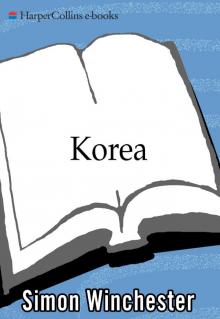 Korea: A Walk Through the Land of Miracles
Korea: A Walk Through the Land of Miracles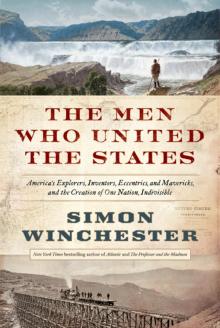 The Men Who United the States: America's Explorers
The Men Who United the States: America's Explorers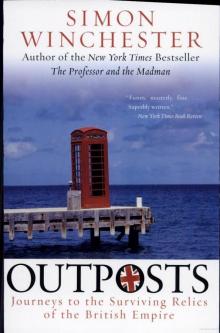 Outposts: Journeys to the Surviving Relics of the British Empire
Outposts: Journeys to the Surviving Relics of the British Empire Atlantic: Great Sea Battles, Heroic Discoveries, Titanic Storms
Atlantic: Great Sea Battles, Heroic Discoveries, Titanic Storms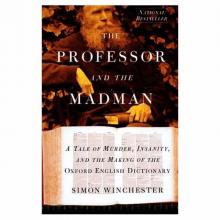 The Professor and the Madman: A Tale of Murder, Insanity
The Professor and the Madman: A Tale of Murder, Insanity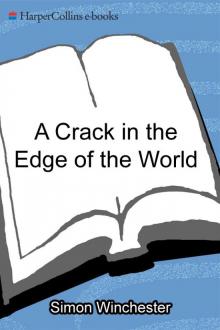 A Crack in the Edge of the World
A Crack in the Edge of the World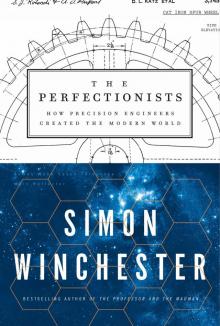 The Perfectionists: How Precision Engineers Created the Modern World
The Perfectionists: How Precision Engineers Created the Modern World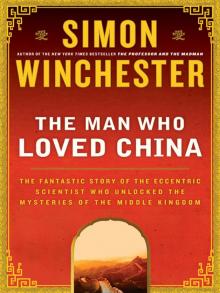 The Man Who Loved China: The Fantastic Story of the Eccentric Scientist
The Man Who Loved China: The Fantastic Story of the Eccentric Scientist The River at the Center of the World: A Journey Up the Yangtze
The River at the Center of the World: A Journey Up the Yangtze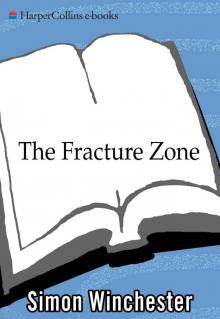 The Fracture Zone: My Return to the Balkans
The Fracture Zone: My Return to the Balkans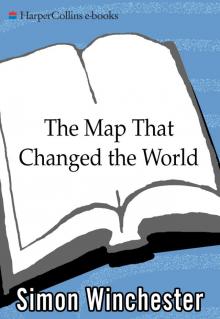 The Map That Changed the World
The Map That Changed the World Krakatoa: The Day the World Exploded
Krakatoa: The Day the World Exploded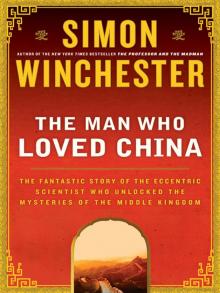 The Man Who Loved China
The Man Who Loved China The River at the Centre of the World
The River at the Centre of the World Bomb, Book and Compass
Bomb, Book and Compass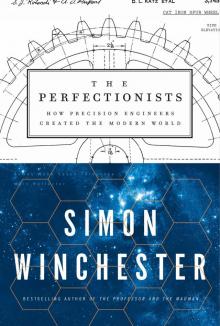 The Perfectionists
The Perfectionists The Meaning of Everything
The Meaning of Everything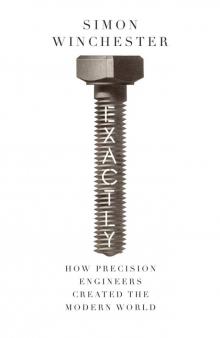 Exactly
Exactly Atlantic
Atlantic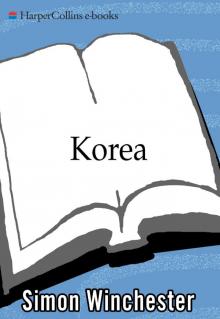 Korea
Korea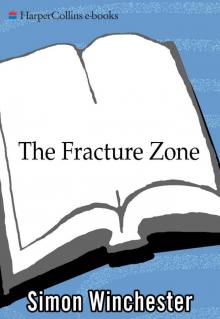 The Fracture Zone
The Fracture Zone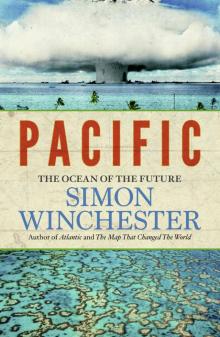 Pacific
Pacific Krakatoa
Krakatoa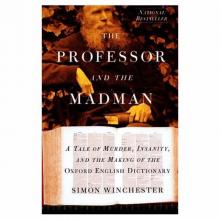 The Professor and the Madman
The Professor and the Madman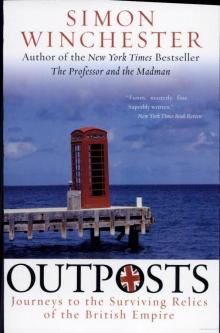 Outposts
Outposts